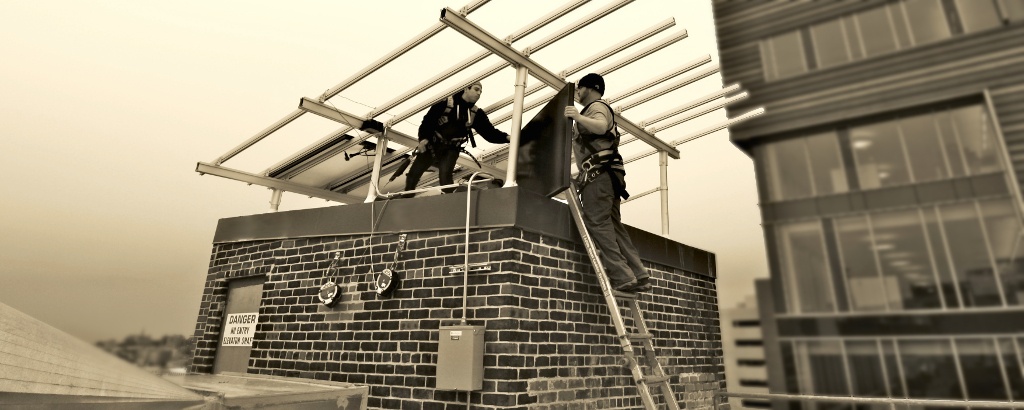
(The image at top shows the installation of a 3.75 kW solar PV array on the elevator hoistway at Fraunhofer USA CSE's Fort Point Office in 2016.)
Elevators consume 5 billion kWh per year in the U.S., costing about $500 million. Since elevators represent up to 80% of all vertical transportation energy, reducing and offsetting elevator energy use could have a major impact.
Elevator manufacturer thyssenkrupp, working with Fraunhofer USA, set out to validate a net-zero solar energy elevator concept in a Boston, MA office building. A net-zero elevator system is one that produces at least as much energy as it consumes over the span of a year. Our goal was to achieve net-zero using a solar array that fits within the elevator footprint.
Getting to net-zero starts with an efficient elevator. The Synergy elevator by thyssenkrupp used in this demonstration features state-of-the-art energy saving features, including a regenerative drive and LED cab lighting. Additional efficiency upgrades were installed during the demonstration, including a more efficient controller capable of a deep-sleep standby mode and an auto-power-down feature that shuts off the cab lights and fan when the elevator is not in use. Together, these upgrades reduced total standby power draw by about 75% and brought the net-zero concept within reach.
To offset the elevator’s energy consumption, we installed a rooftop solar photovoltaic (PV) array on Fraunhofer USA CSE's Boston headquarters above the elevator hoistway. The 3.75 kW solar PV system, designed to produce about 4,000 kWh per year in Boston, slightly exceeded its annual production goal in its first year of operation.
To validate the net-zero concept, Fraunhofer USA continuously measured the elevator power draw during normal operation over several years, spanning several hardware and software configurations. These measurements were then used to calculate annual energy consumption under different usage and efficiency scenarios.
With the auto-power-down features enabled, and with a low-to-medium activity profile (up to two hours' travel time per day), Fraunhofer USA found that the elevator consumed about 8 kWh per day. The solar array generated on average more than 11 kWh day, leading to an annual energy surplus. Considering a hypothetical higher usage scenario, where the number of elevator trips doubles on business days, Fraunhofer USA projects that net-zero energy is still attainable with the same size solar array.